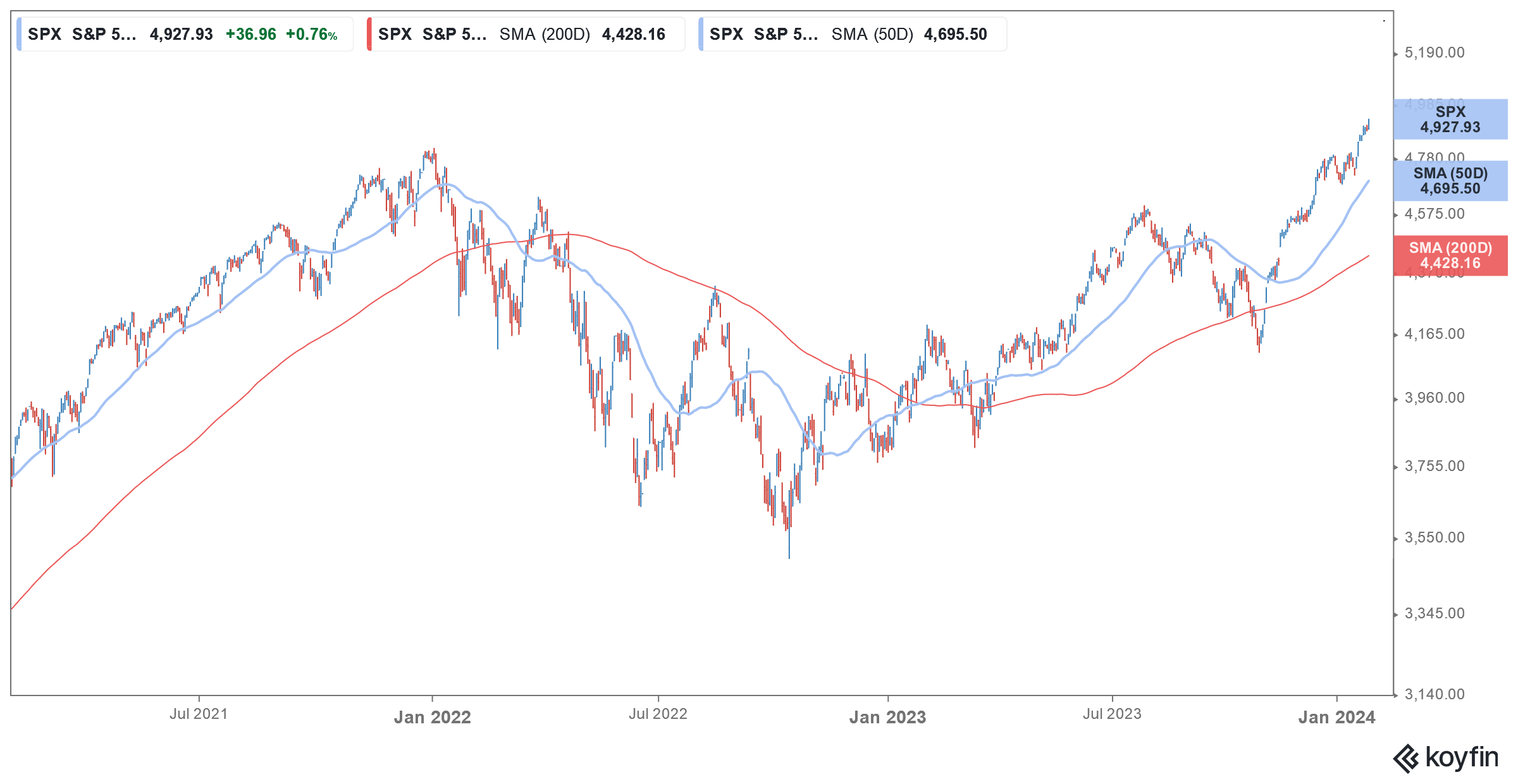US Treasury Yields Fall Ahead of Fed Meeting as Rate Cut Clamor Grows
Please note that we are not authorised to provide any investment advice. The content on this page is for information purposes only.
The US Federal Reserve will begin its two-day meeting today and announce the rate outcome tomorrow. US Treasury Yields have fallen ahead of the Fed meeting as markets await Chair Jerome Powell’s comments on the projected rate cuts in 2024.
According to the CME FedWatch tool, traders see a 98% probability of the Fed maintaining its status quo on interest rates and keeping them at current levels of 5.25%-5.50%. Traders are almost equally divided about the outcome of the March meeting though and while 52.4% see rates at current levels after the March meeting also, 46.6% of traders predict a 25-basis point cut at the March meeting.
Traders see rate cuts later this year
Meanwhile, traders see a wide range of outcomes by the end of this year, and almost a sixth predict rates between 3.5%-3.75% by the end of 2024 which would imply a cumulative rate cut of 1.75% in 2024. 37.3% and 31.9% of the traders predict rates between 3.75%-4.0% and 4.0%-4.25% by the end of 2024.
12.4% traders see rates between 4.25%-4.50% which would mean a cut of 100 basis points. During the December meeting, the Fed’s dot plot called for a cumulative rate cut of 75 basis points for 2024.
Fed has been on a rate-hiking spree
The Fed has been on a rate-hiking spree since March 2022 starting with 25 basis points in March 2022 followed by 50 basis points in May. In the next four meetings of 2022, it raised rates by 75 basis points – a pace not seen in years – but toned down the hike to 50 basis points in December. The Fed raised rates four times in 2023 by 25 basis points each to lift the policy rates to the highest since 2007.
US Treasury yields also spiked above 5% last year for the first time since 2002. However, ahead of the Fed’s January meeting, the yields have moderated a bit and the 10-year Treasury yield is around 4.058%. However, the yield curve remains inverted and the 2-year Treasury yield is around 25 basis points higher than the 10-year yield.
While economists see an inverted yield curve as a sign of recession, the US yield curve has been inverted for months now and despite doomsayers predicting a recession for the last few quarters, the US economy has held on quite well even as global growth has sagged.
Fed talked about rate cuts in December
It’s been almost 18 months since market participants started talking about a Fed pivot or a move from rate hikes to rate cuts. However, Fed chair Jerome Powell has dashed rate cut hopes on multiple occasions and termed them as “premature” towards the beginning of December.
However, the Fed took a somewhat dovish stance and talked about rate cuts at its December meeting.
December meeting minutes
However, the minutes of that meeting spooked investors as it did not specify any timeline for rate cuts. The Fed minutes said, “In discussing the policy outlook, participants viewed the policy rate as likely at or near its peak for this tightening cycle, though they noted that the actual policy path will depend on how the economy evolves.”
The minutes further said, “Several participants remarked that the Committee’s past policy actions were having their intended effect of helping to slow the growth of aggregate demand and cool labor market conditions. They judged that, in combination with improvements in the supply situation, these developments were helping to bring inflation back to 2 percent over time.”
Senators call upon the Fed to cut rates
While markets have long been expecting the Fed to cut rates, Sen. Elizabeth Warren, D-Mass along with three other lawmakers has written a letter to Powell calling upon the US Central Bank to cut rates stressing that higher rates are negatively impacting home affordability.
“As the Fed weighs its next steps in the new year, we urge you to consider the effects of your interest rate decisions on the housing market,” says the letter.
It added, “The Fed’s decision to raise interest rates rapidly, and keep them high, has resulted in higher costs for home purchasers, higher rents, and reductions in new home and apartment building—and the job growth that comes with these investments.”
The Senators also talked about the impact of Fed rate hikes on the rental market. The letter said, “The effects of the Fed’s monetary policy also extend to the rental market. As high costs and interest rates deter prospective first-time home buyers, many families and individuals choose to stay in the rental market. However, these households are not guaranteed to find more affordable conditions awaiting them.
US inflation has moderated
US inflation has been somewhat sticky amid high wages and shelter costs. Notably, in 2020, the US Central Bank changed its inflation-targeting approach and now targets an average inflation of 2% rather than chasing absolute numbers. The mandate gives Powell and company more leeway in deciding on monetary policy, unlike previously where its mandate was to keep inflation below 2% at all times.
While inflation has fallen sharply after the annualized CPI peaked at 9.1% in June 2022, it is still high for comfort. Even as the CME Fed Watch tool shows that almost all traders predict rate cuts in 2024, Powell has disappointed rate cut proponents on more than one occasion over the past year.
As for the Fed’s upcoming meeting, while markets are almost unanimous that the Fed would keep rates steady, all eyes would be on Powell’s comments on the future rate cuts at tomorrow’s press conference.






